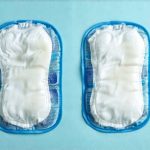Urinary tract infections (UTIs) are incredibly common, affecting millions of people annually – disproportionately women, but certainly not exclusively. The discomfort they cause can range from mildly irritating to severely debilitating, often involving a burning sensation during urination, frequent urges to go, and lower abdominal pain. Because these symptoms are so unpleasant, individuals understandably search for quick relief options, exploring everything from over-the-counter medications to home remedies. A frequently asked question arises: can applying heat – specifically using a heating pad – offer any measure of comfort when dealing with the frustrating symptoms of a UTI? It’s important to approach this topic with nuance, understanding that while heating pads can address some aspects of discomfort associated with UTIs, they are not a treatment for the infection itself.
It’s crucial to remember that UTIs require medical attention, usually in the form of antibiotics prescribed by a healthcare professional. A heating pad is strictly a symptomatic relief tool; it doesn’t tackle the bacterial cause of the UTI. Relying solely on heat without seeking proper medical care can lead to complications as the infection could spread to the kidneys, resulting in a more serious condition. This article will explore how heating pads might alleviate certain UTI symptoms, what precautions should be taken, and why professional medical advice is paramount when dealing with this common health issue. We’ll aim for a balanced perspective, separating comfort measures from actual treatment strategies.
The Potential Benefits of Heat for UTI Symptom Relief
The discomfort associated with UTIs often stems from inflammation and muscle tension in the pelvic region and lower back. A heating pad can help to ease these symptoms by increasing blood flow to the area. This increased circulation can help relax tight muscles, reducing pain and a sense of pressure. Think about how heat is used for other types of muscular discomfort – it’s a well-established principle that warmth can be soothing. The sensation of warmth itself can also provide a distracting comfort, temporarily diverting focus from the burning or urgency associated with urination. It’s important to reiterate: this doesn’t cure the UTI, but it may make you feel more comfortable while waiting for treatment to take effect and during recovery.
Heating pads are readily accessible and relatively inexpensive, making them a convenient option for some symptomatic relief. They can be particularly helpful for individuals experiencing lower abdominal pain or backaches that accompany UTIs, which are often caused by muscle spasms triggered by the discomfort and urgency. However, it’s important to consider the type of heating pad used – electric heating pads offer consistent heat but require caution regarding temperature settings, while microwavable options provide localized warmth but cool down more quickly. Regardless of the type, proper use is essential (discussed further below).
It’s also worth noting that psychological comfort plays a role. Feeling proactive about managing your symptoms, even with a simple measure like applying heat, can help reduce anxiety and stress associated with dealing with an illness. This sense of control can be beneficial during a time when you feel uncomfortable and vulnerable.
Precautions and Proper Use
Using a heating pad incorrectly or without awareness of potential risks could exacerbate discomfort or even cause harm. Therefore, understanding the precautions is vital.
- Never apply a heating pad directly to the skin for extended periods. Always use a towel or cloth barrier between the pad and your skin to prevent burns.
- Start with the lowest heat setting and gradually increase it only if needed and tolerated. High temperatures can damage the skin and are unlikely to provide greater relief.
- Limit application time to 15-20 minutes at a time, with breaks in between. Prolonged exposure to heat can cause skin irritation or dehydration.
- Avoid using heating pads on broken or irritated skin.
- Individuals with certain medical conditions – such as diabetes, poor circulation, or nerve damage – should consult their doctor before using a heating pad, as they may be more susceptible to burns or other complications.
Furthermore, it’s crucial to avoid using a heating pad in place of seeking medical attention. A UTI is a bacterial infection that requires antibiotics; heat only addresses the symptoms and does not eliminate the underlying cause. If your symptoms worsen or do not improve within a reasonable timeframe after starting antibiotic treatment (as prescribed by your doctor), you should contact your healthcare provider immediately.
When to Avoid Using a Heating Pad Altogether
While heating pads can offer temporary relief for some UTI symptoms, there are situations where their use is strongly discouraged. These relate primarily to underlying health conditions or the specific nature of the infection itself.
- If you have any form of skin sensitivity or compromised sensation (e.g., due to diabetes or neuropathy), using a heating pad significantly increases your risk of burns without you even realizing it’s happening.
- During pregnancy, applying heat directly to the lower abdomen should be avoided unless specifically advised by your healthcare provider. While mild warmth may sometimes provide comfort, excessive heat can potentially affect fetal development.
- If you suspect a kidney infection (characterized by fever, flank pain, nausea, and vomiting), do not use a heating pad. Kidney infections are serious conditions requiring immediate medical intervention. Heat could mask symptoms or even worsen the infection.
Alternatives to Heating Pads for Symptom Management
Beyond heat therapy, several other strategies can help manage UTI symptoms while awaiting treatment or during recovery.
- Hydration: Drinking plenty of water helps flush bacteria out of the urinary tract and dilutes urine, reducing irritation. Aim for at least eight glasses of water per day.
- Over-the-counter pain relievers: Medications like ibuprofen or acetaminophen can help alleviate pain and discomfort. Follow dosage instructions carefully.
- Cranberry products: While research is ongoing and results are mixed, some studies suggest that cranberry juice or supplements may help prevent bacteria from adhering to the urinary tract walls (although they do not cure an existing infection).
- Avoid irritants: Caffeine, alcohol, spicy foods, and citrus juices can all irritate the bladder and worsen UTI symptoms. Reducing your intake of these substances may provide some relief.
- Rest: Allowing your body adequate rest supports its immune system and helps it fight off the infection more effectively.
Ultimately, remember that a heating pad is merely one potential tool for managing symptoms associated with a UTI. It’s not a substitute for professional medical care. Prompt diagnosis and appropriate antibiotic treatment are essential to prevent complications and ensure full recovery from this common but often uncomfortable condition. Prioritize seeking guidance from your healthcare provider if you suspect you have a UTI, and use heating pads cautiously and responsibly as part of a comprehensive approach to symptom management.





















